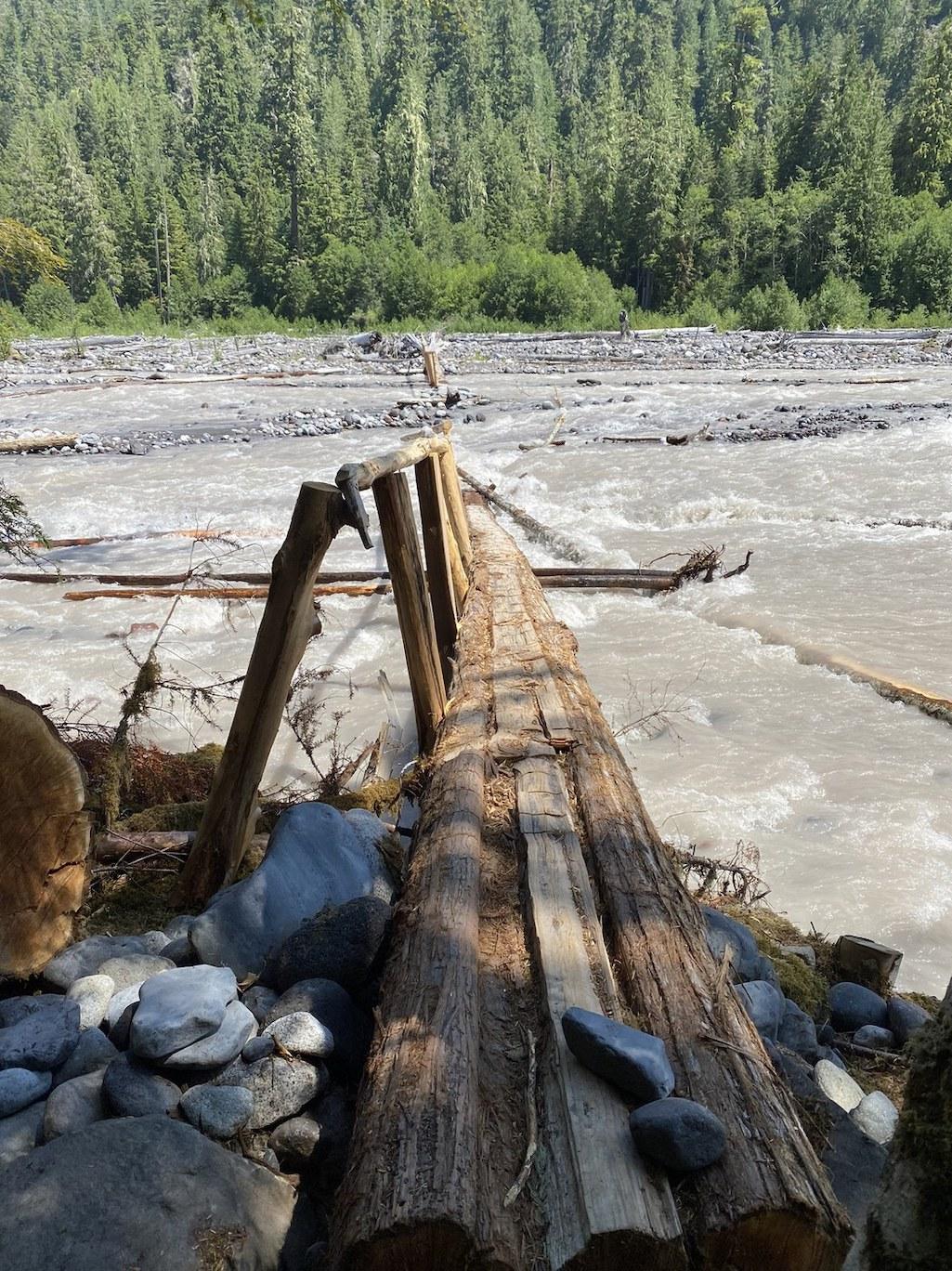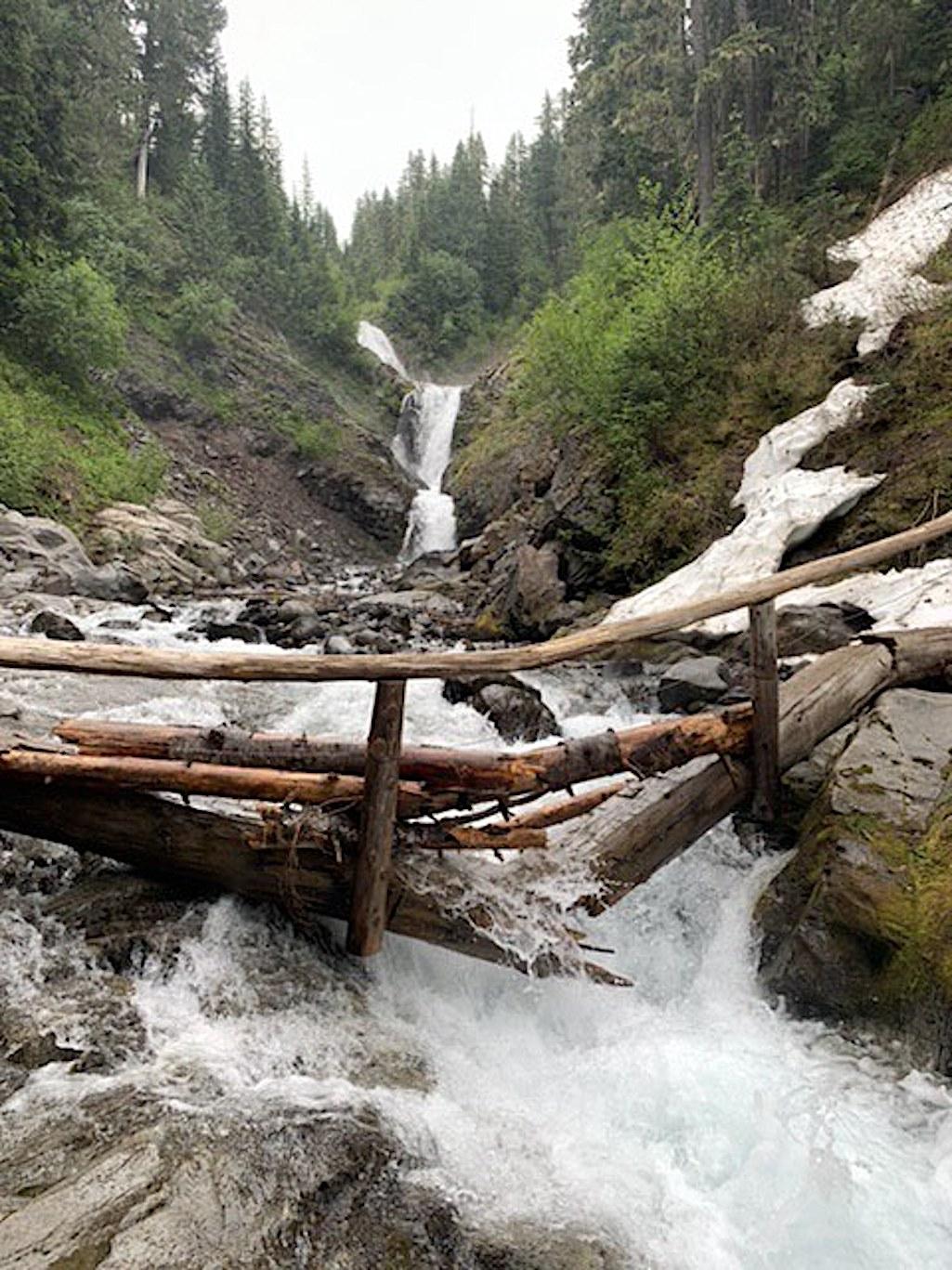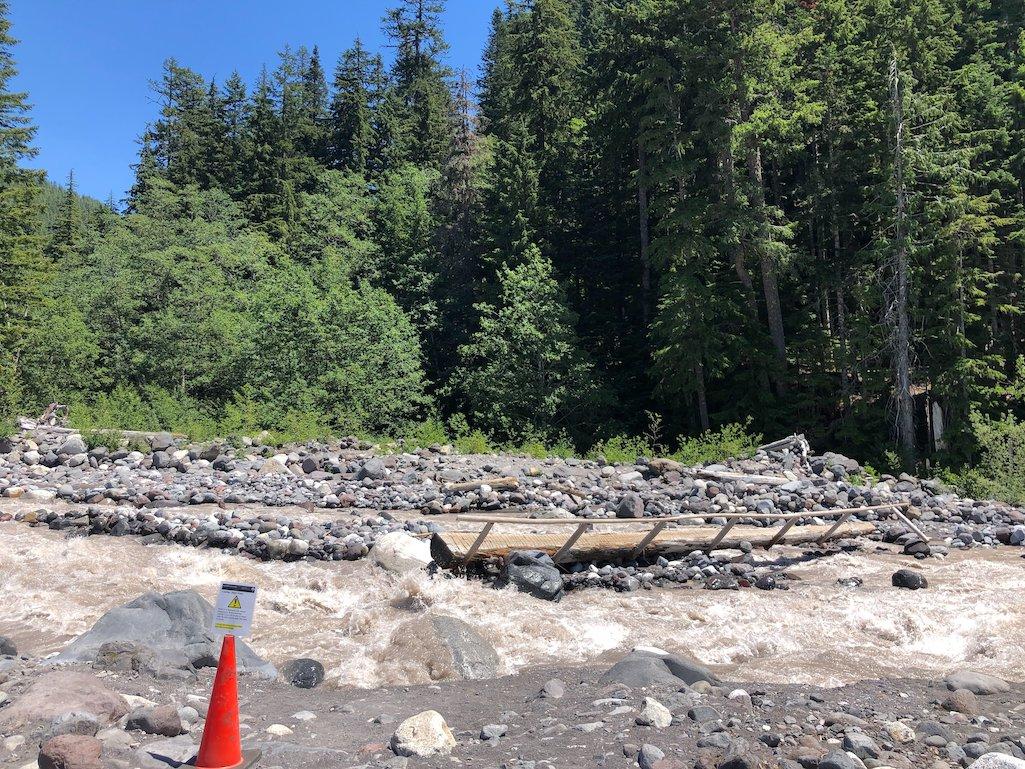The late-June heat wave that baked the Pacific Northwest led to a number of problems at Mount Rainier National Park, where backcountry bridges crossing streams were washed out and a section of road was buckled by the heat.
Among the high temperatures recorded in the park was a record-tying reading of 105° Fahrenheit on June 28 at Longmire that matched the high noted there in 1935.
Backcountry travelers noted a number of washed out bridges.

A footbridge crossing the Carbon River (above) in the northwest corner of the park was washed out, noted Rockbound Highland Hiker on the Washington Trails Association website.
Also damaged by runoff was the bridge crossing for the hike to Comet Falls.

Runoff damaged the footbridge on the way to Comet Falls/Hawkchiro via Washington Trails Association website.
"We did cross it and saw Comet Falls, but do so at your own risk. Hopefully they fix the bridge soon," noted Hawkchiro.
Park staff cautioned hikers to avoid bridges "if water is starting to cover them."
"You can be hit by debris and being washed off can be fatal. Bridges can also wash-out later in the day," the park said in a tweet on June 28. "First photo (below) is from Sat 6/26 of the Nisqually River bridge near Cougar Rock, second from today when bridge washed out!"

Nisqually River Bridge at Cougar Rock/NPS

Washed-out footbridge near Cougar Rock in Nisqually River/NPS
The heat wave also rumpled State Route 410, aka Chinook Pass, according to park staff.
"Due to road damage from a recent heatwave, the speed limit on SR410 is reduced from 50 mph to 30 mph from mileposts 69, from the summit of Chinook Pass, to milepost 74, five miles east of the summit," a park notice said. "Motorcyclists should use extreme caution due to the rough road and loose material on the roadway."
Park staff also cautioned hikers not to "underestimate the power of moving water. Regardless of your knowledge, skills, and experience, use these pointers in making wise decisions before attempting to cross a river."



Comments
Trail crews in the Northwest reserve the term 'bridge' for decked structures passable by horses; these photos show what are called 'footlogs'. A second footlog across the Carbon River at the Northern Loop Trail is also washed out, in addition to the Chenuis Falls crossing shown in the first photo. It seems likely that other damaged stream crossings remain unreported.
As recently as June 26th, Paradise was reporting a snowpack 73 inches deep. Only eighteen inches were left at the weather station after this heat wave.